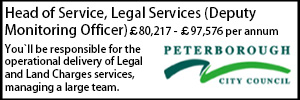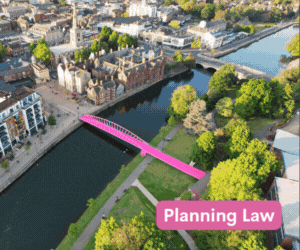Rural Advocate urges housing land assessment rethink
Local authorities should review their housing land assessments to take better account of rural needs and adopt a more creative and flexible approach to planning in a bid to stop young people being forced out of their areas, the government's Rural Advocate has said.
In a report to the Prime Minister, Dr Stuart Burgess said a lack of affordable housing – whether to buy or rent – is the major factor driving young people out or discouraging their return.
The study found that social housing accounts for just 13% of housing stock in rural areas, compared to 22% in urban areas. Council housing accounts for just 4% of stock in rural areas.
Analysis suggests that demand for new rural housing will grow by 35% between 2006 and 2031, 8% higher than the comparative rate for urban areas.
The Rural Advocate's report also called for:
- new ways to meet employment and training needs in more isolated areas, extending the support offered by Job Centre Plus, Connexions and similar schemes
- local authorities to set out explicitly how they will meet the needs of rural communities when they review their transport plans
- greater efforts by schools and universities to raise young people's aspirations, and
- a push to improve mobile phone coverage and broadband services in rural areas.
Dr Burgess said in the report: “Wherever I go, I hear deep concerns – that challenges with housing, work, transport, training and social exclusion are preventing young people from living in the countryside. Without young people to provide a work force, rural economies are unable to fulfill their full potential and rural communities can go into decline.”
- Details
Local authorities should review their housing land assessments to take better account of rural needs and adopt a more creative and flexible approach to planning in a bid to stop young people being forced out of their areas, the government's Rural Advocate has said.
In a report to the Prime Minister, Dr Stuart Burgess said a lack of affordable housing – whether to buy or rent – is the major factor driving young people out or discouraging their return.
The study found that social housing accounts for just 13% of housing stock in rural areas, compared to 22% in urban areas. Council housing accounts for just 4% of stock in rural areas.
Analysis suggests that demand for new rural housing will grow by 35% between 2006 and 2031, 8% higher than the comparative rate for urban areas.
The Rural Advocate's report also called for:
- new ways to meet employment and training needs in more isolated areas, extending the support offered by Job Centre Plus, Connexions and similar schemes
- local authorities to set out explicitly how they will meet the needs of rural communities when they review their transport plans
- greater efforts by schools and universities to raise young people's aspirations, and
- a push to improve mobile phone coverage and broadband services in rural areas.
Dr Burgess said in the report: “Wherever I go, I hear deep concerns – that challenges with housing, work, transport, training and social exclusion are preventing young people from living in the countryside. Without young people to provide a work force, rural economies are unable to fulfill their full potential and rural communities can go into decline.”
Trust Solicitor (Employment & Contract Law)
Senior Lawyer - Contracts & Commercial
Contracts & Procurement Lawyer
Lawyer - Property
Locums
Poll









































